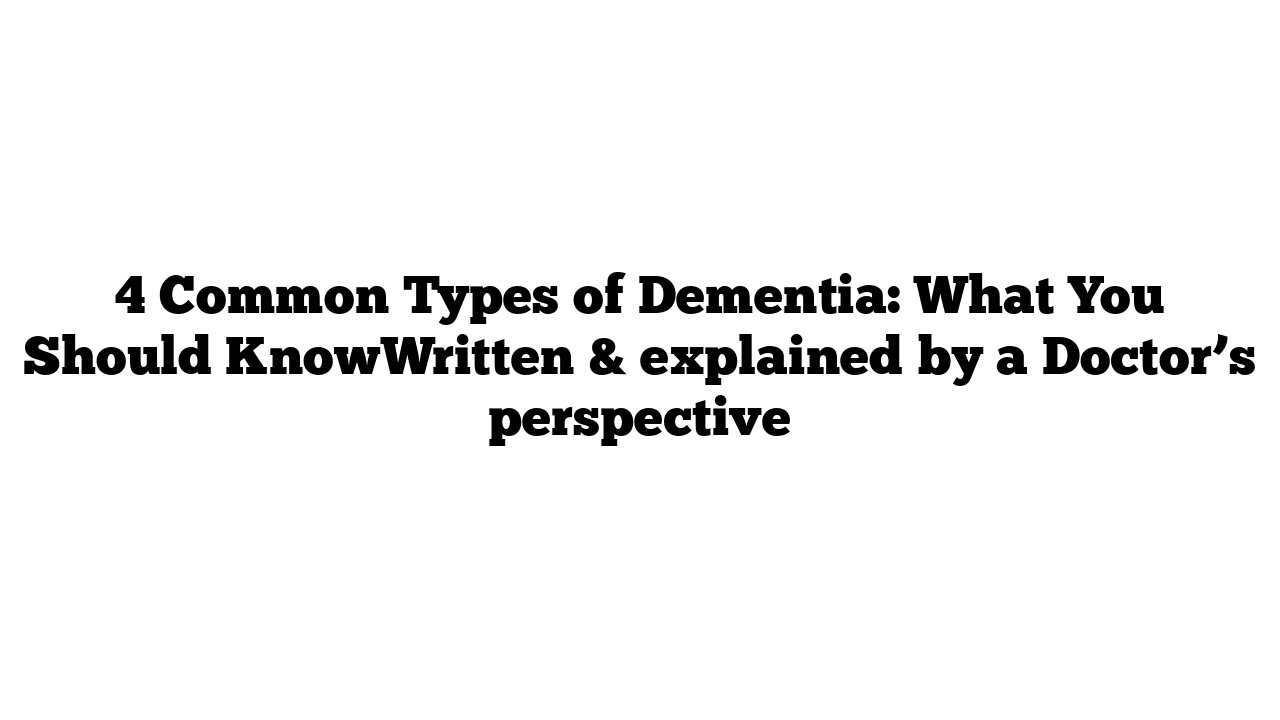Dementia is a term that encompasses several brain disorders causing memory, thinking, and behavior changes severe enough to interfere with daily life. As a gerontologist, I often encounter questions about dementia. While there are numerous types and causes, this article focuses on the 4 most common types of dementia and their distinct characteristics.
Years ago, terms like organic brain syndrome or senile dementia were commonly used to describe cognitive decline. Today, we have more precise diagnoses. Let’s explore the most prevalent types and their impact.
1. Alzheimer’s Disease
Alzheimer’s disease is the most well-known and accounts for 60–80% of dementia cases. Often referred to as the “long goodbye,” it is a progressive, chronic neurological disorder that worsens over time.
Early signs include:
- Short-term memory loss.
- Difficulty focusing.
- Mood disturbances.
As the disease advances, individuals face severe memory impairment, disorientation, and loss of the ability to carry out simple tasks. While treatments exist to manage symptoms, Alzheimer’s remains irreversible.
2. Vascular Dementia
Vascular dementia makes up about 10% of cases and is directly linked to cardiovascular issues. This type occurs when blood flow to the brain is reduced or blocked, often due to mini-strokes or other heart-related conditions.
Remember: What’s good for your heart is good for your brain!
Key symptoms include:
- Sudden personality changes.
- Trouble reasoning and thinking clearly.
- Physical signs like a drooping face, paralysis, or numbness after a stroke.
Unlike Alzheimer’s, vascular dementia is often not progressive, though it can still cause significant challenges in daily life.
3. Frontotemporal Dementia (FTD)
Affecting 2–10% of dementia cases, frontotemporal dementia results from the deterioration of the brain’s frontal and temporal lobes. Sadly, it’s frequently misdiagnosed as Alzheimer’s due to overlapping symptoms.
Unique characteristics of FTD include:
- Behavioral changes, such as inappropriate actions or lack of empathy.
- Difficulty planning or judging situations.
- Emotional detachment.
- Declining communication and language skills.
Unlike other dementias, involuntary movements and social inappropriateness are more commonly observed in FTD.
4. Lewy Body Dementia (LBD)
Lewy body dementia, affecting about 5% of dementia cases, is often underdiagnosed or mistaken for Alzheimer’s or Parkinson’s disease. It’s considered a “hybrid disorder,” blending symptoms of both conditions.
Hallmark symptoms include:
- Visual hallucinations of small people or animals (which typically don’t cause distress).
- Acting out dreams or sleepwalking.
- Parkinson’s-like motor symptoms, such as stiffness or tremors.
While LBD has unique features, its overlap with other conditions often delays proper diagnosis.
Understanding Dementia Is Key
Each type of dementia brings unique challenges, but early recognition can improve management and quality of life. If you or a loved one notices symptoms like memory loss or personality changes, seek medical advice.
For more insights on health topics, visit medicaltimes.io.
FAQs: Your Questions Answered
1. What is the most common type of dementia?
Alzheimer’s disease, accounting for 60–80% of all cases.
2. Can vascular dementia be reversed?
While the damage is often permanent, managing heart health can prevent further progression.
3. How is frontotemporal dementia different from Alzheimer’s?
FTD primarily affects behavior and language, while Alzheimer’s starts with memory loss.
4. What causes Lewy body dementia?
LBD is caused by abnormal protein deposits in the brain, disrupting its normal function.
5. Are there treatments for dementia?
While no cure exists, medications and therapies can manage symptoms and improve quality of life.
6. Is dementia hereditary?
Some forms, like familial Alzheimer’s, have a genetic component, but not all types are inherited.
7. Can lifestyle changes prevent dementia?
Healthy habits like a balanced diet, regular exercise, and mental stimulation can reduce risk.
8. How is dementia diagnosed?
Through a combination of cognitive tests, imaging scans, and medical history.
9. At what age does dementia typically start?
Most cases occur after age 65, though early-onset dementia can appear in people as young as 40.
10. Can dementia mimic other conditions?
Yes, depression, thyroid issues, and vitamin deficiencies can cause dementia-like symptoms.
